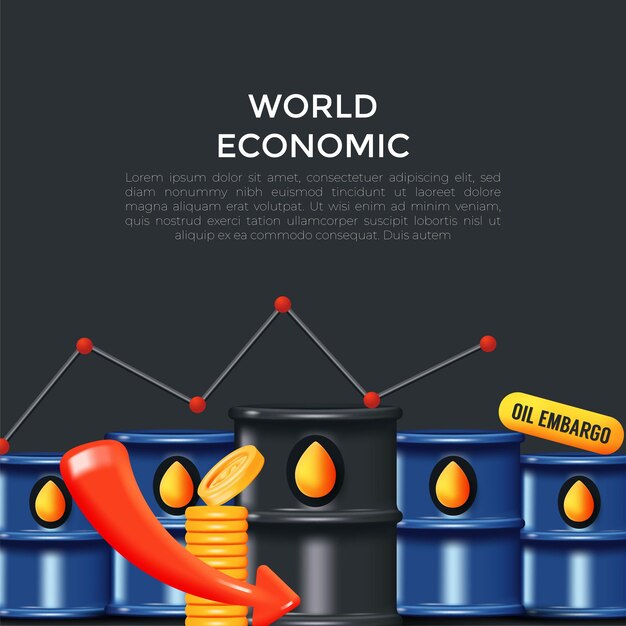Gas Price Prediction 2024 – 2030: Forecasting Trends for 2025 and Beyond
In today’s constantly evolving era of energy consumption, one crucial aspect that keeps industries and households alike on their toes is the cost of powering vehicles and machinery. This unrelenting fluctuation in fuel expenses not only affects the wallets but also has sweeping ramifications on economic structures and future sustainability. It is no wonder that professionals across various disciplines strive to unravel the enigma of fuel price behavior, foreseeing the coming waves and speculating the highs and lows that lie on the horizon.
The act of conjecturing fuel prices is akin to navigating a vast and intricate maze adorned with intricate patterns only perceptible to the sharpest minds. While the term “prediction” often conjures images of crystal balls and mysticism, the science of anticipating fuel expenditures rests upon a foundation built by data analysis, economic trends, and comprehensive research. By examining the subtle shifts in fuel costs, patterns begin to emerge, revealing hidden corridors of information that aid in decoding the complex equations governing fuel expenses.
Like a master sculptor molding clay into a masterpiece, experts armed with these insights and enlightened projections are able to guide businesses and individuals towards informed decisions. They unravel the intricate web of supply and demand, tapping into the intricate dance performed by geopolitics, environmental concerns, and global events that impact the delicate balance of fuel prices. Armed with these analyses and predictions, stakeholders can chart their course with confidence, maximizing efficiency, and minimizing financial strain.
Factors Influencing Future Gas Prices
When considering the future trends and forecasts of gas prices, it is important to analyze the various factors that have the potential to influence the cost of this essential energy source. These factors encompass a wide range of economic, geopolitical, and environmental considerations that play a significant role in determining the future price of gas.
Economic Factors
Economic factors such as global economic growth, inflation, and currency exchange rates have a direct impact on gas prices. A strong economy generally leads to increased energy demand, translating into higher prices for gas. Moreover, inflation can erode the purchasing power of money, causing gas prices to rise. Additionally, fluctuations in exchange rates can affect the cost of importing and exporting gas, further influencing its price.
Geopolitical Factors
Geopolitical factors, including political stability, conflicts, and sanctions, are critical in determining gas prices. Countries that are major gas exporters or have significant gas reserves can use their energy resources as leverage in international relations, potentially leading to supply disruptions or price manipulations. Moreover, geopolitical tensions or conflicts in gas-producing regions can create uncertainty in the global market, which can result in price volatility.
Table below demonstrates the correlation between each factor and its influence on future gas prices:
| Factors | Influence on Future Gas Prices |
|---|---|
| Economic Factors | Positive correlation |
| Geopolitical Factors | Highly influential |
In conclusion, understanding the factors that influence future gas prices is crucial for making accurate predictions and forecasts. By considering economic and geopolitical factors alongside other relevant aspects, a clearer picture can be formed regarding the potential trends in gas prices, enabling individuals and organizations to make informed decisions related to energy consumption and investment.
Analysis of Historical Gasoline Price Trends
Understanding the historical trends of gasoline prices is crucial for predicting future changes and making informed decisions. This section explores the patterns and factors contributing to the fluctuations in gasoline prices over time.
The Influence of Supply and Demand
One of the key factors affecting historical gasoline prices is the delicate balance between supply and demand. Fluctuations in crude oil prices, geopolitical events, and economic conditions all impact the availability of gasoline and its demand. Analyzing the historical data helps identify patterns and correlations between these factors and the corresponding changes in gasoline prices.
The Impact of Market Forces
Market forces, such as competition among fuel suppliers and technological advancements, also play a significant role in shaping historical trends in gasoline prices. The emergence of alternative fuel sources, government regulations, and consumer preferences all contribute to the dynamics of the gasoline market. Examining the historical data sheds light on how these market forces have influenced the pricing structure of gasoline.
By analyzing the historical gasoline price trends, we gain insights into the cyclical nature of the market and the underlying factors that drive price changes. This knowledge can assist in predicting future trends and making informed decisions related to fuel consumption and investment opportunities. It is essential to understand the complexities of the historical trends to navigate the dynamic nature of the gasoline market successfully.
The Role of Global Oil Supply and Demand in Gas Price Forecasting
In the context of gas price forecasting, understanding the dynamics of global oil supply and demand is crucial. The intricate relationship between these factors plays a significant role in determining the future trends and predictions of gas prices. By analyzing the worldwide patterns of oil production and consumption, experts can gain insights into the expected fluctuations in gas prices.
The Interconnected Nature of Oil and Gas
Oil serves as the primary source of energy for various industries and households worldwide. Understanding the intricate relationship between oil and gas is essential in forecasting the pricing trends of gas. This interconnection arises from the fact that gas is often produced as a byproduct of oil extraction. As a result, shifts in oil supply and demand have a direct impact on gas availability and subsequently influence its pricing.
Analyzing Global Oil Supply and Demand
To forecast gas prices, experts closely analyze global oil supply and demand trends. This analysis includes assessing factors such as geopolitical events, economic growth, technological advancements, and environmental regulations. By considering these factors, analysts can gain insights into how changes in oil supply and demand will affect gas prices globally. This information forms the basis for accurate gas price forecasting and enables businesses and consumers to plan ahead.
| Key Factors in Global Oil Supply and Demand Analysis |
|---|
| Geopolitical events |
| Economic growth and development |
| Technological advancements in oil extraction and refining |
| Environmental regulations and policies |
Impact of Geopolitical Events on Gas Prices
When analyzing the factors affecting global energy prices, it is impossible to disregard the profound influence of geopolitical events. Various political, economic, and social occurrences around the world have the potential to significantly impact the supply and demand dynamics of the gas market, ultimately leading to fluctuations in gas prices.
Geopolitical Tensions and Energy Security
One of the primary ways in which geopolitical events impact gas prices is through the emergence of tensions among nations. Conflicts or disputes over resources, territorial claims, or ideological differences can disrupt the production, transportation, or distribution of gas, causing a ripple effect on global supply chains. Such disruptions often result in higher gas prices due to increased market volatility and concerns over energy security.
Sanctions and Trade Policies
Sanctions and trade policies adopted by governments can also have a significant impact on gas prices. When certain countries impose sanctions on gas-producing nations, restrictions on trade can inhibit the export or import of gas, leading to changes in supply and demand dynamics. These measures often create an uncertain environment, which can drive up prices due to market uncertainty and limited availability.
Moreover, geopolitical events such as trade disputes or changes in trade agreements can disrupt established supply chains or alter the pricing structures of gas exports. These shifts can have lasting effects on gas prices, as market participants grapple to adjust to new trade dynamics and renegotiate contracts.
It is crucial for energy analysts and policymakers to closely monitor geopolitical events to anticipate potential disruptions in the gas market. By understanding and analyzing the impact of geopolitical factors on gas prices, stakeholders can make informed decisions to mitigate risks and adapt to changing market conditions.
Ultimately, the interaction between geopolitics and gas prices highlights the complex nature of the energy market, reinforcing the need for comprehensive assessment and proactive strategies to navigate the uncertainties of the future.
Technological Innovations and Their Potential Effects on Gas Prices
In the ever-evolving landscape of energy production, advancements in technology continue to shape the future of fuel consumption. These technological innovations have the potential to revolutionize the gas industry, impacting both supply and demand dynamics, and consequently influencing gas prices.
The Rise of Renewable Energy
One notable technological innovation that stands to impact gas prices is the increasing prominence of renewable energy sources such as solar and wind power. As these clean energy alternatives become more efficient and cost-effective, they are poised to replace traditional fossil fuels to a certain degree. The reduced reliance on gas as a primary energy source may lead to supply surpluses and a subsequent downward pressure on gas prices.
The Role of Smart Grids and Smart Metering
Further technological innovation can be observed in the implementation of smart grids and smart metering systems. These advancements allow for more efficient energy distribution and better demand management. By remotely monitoring and adjusting energy consumption patterns, smart grids and smart metering can optimize the use of gas resources, potentially reducing wastage and decreasing overall demand. This optimized usage could contribute to a stabilizing effect on gas prices.
It is important to recognize that the adoption of these technological innovations is not without challenges. The initial investment costs, infrastructure requirements, and regulatory frameworks are factors that may affect the pace and extent of their implementation. Nevertheless, as their integration progresses, the potential effects of these advancements on gas prices cannot be overlooked. The transformation of the energy landscape through technological innovations presents the gas industry with both opportunities and uncertainties.
In conclusion, various technological innovations hold the potential to reshape the gas industry and have consequential effects on gas prices. From the rise of renewable energy sources to the implementation of smart grids and smart metering systems, these advancements aim to optimize energy consumption and reduce reliance on traditional gas resources. As such, it is crucial for market players and stakeholders to stay cognizant of these developments and adapt to the evolving landscape to make informed decisions regarding gas prices and future trends.
Predictive Models and Algorithms for Gas Price Forecasting
Exploring the future of fuel costs involves the utilization of advanced predictive models and algorithms that allow for accurate forecasts and projections. By harnessing the power of cutting-edge technology, industry experts can gain valuable insights into the possible trajectories of gas prices without relying solely on guesswork or subjective opinions. This section delves into the realm of predictive modeling and the algorithms that underpin gas price forecasting, shedding light on the methodologies used to anticipate fluctuations in fuel costs.
The Role of Predictive Models
Predictive models serve as indispensable tools for understanding the complex dynamics of gas price fluctuations. These models leverage historical data, current market conditions, and external factors to generate forecasts that can help stakeholders make informed decisions based on accurate projections. By incorporating statistical techniques, machine learning algorithms, and data analysis methods, predictive models provide a systematic approach to examine the potential trends and patterns in gas price movements.
Algorithms for Gas Price Forecasting
Various algorithms contribute to the effectiveness and reliability of gas price forecasting. Machine learning algorithms, such as regression, support vector machines (SVM), and neural networks, play a crucial role in capturing intricate relationships between different variables and predicting future trends. Additionally, time series models, including autoregressive integrated moving average (ARIMA) and exponential smoothing, enable researchers to analyze historical data patterns and project future price movements.
It is essential to combine and fine-tune these algorithms to ensure the accurate prediction of gas prices. This involves carefully selecting appropriate data sets, refining model parameters, and validating models through rigorous testing. By iterating and optimizing algorithms, researchers can enhance their forecasting capabilities and provide valuable insights into the future trends of gas prices.
Overall, predictive models and algorithms offer a scientific and data-driven approach to gas price forecasting. By analyzing historical data and incorporating advanced techniques, these models enable stakeholders to anticipate fluctuations, plan investments, and adapt their strategies accordingly.
Questions and answers: Gas gas price prediction
What factors influence gas prices?
Gas prices are influenced by various factors including global demand and supply, geopolitical events, weather conditions, government policies, and exchange rates.
Are gas prices expected to increase in the future?
While it is difficult to predict with certainty, many experts believe that gas prices will increase in the future due to the rising global demand for energy and limited fossil fuel resources.
How can I predict future gas prices?
There are several approaches to predicting future gas prices. These include analyzing historical data, monitoring global economic trends, examining geopolitical events, and considering technological advancements in the energy sector.
What are the potential impacts of gas price fluctuations?
Gas price fluctuations can have significant impacts on various sectors of the economy. Higher gas prices can lead to increased transportation costs, inflation, and reduced consumer spending power, while lower gas prices can stimulate economic growth and lower production costs for industries reliant on energy.
What are some potential developments in the cryptocurrency market expected by 2024?
By 2024, the cryptocurrency market may experience advancements in technology, regulatory changes, and increased institutional adoption, among other developments.
How might the cryptocurrency market evolve by 2025 compared to its current state?
By 2025, the cryptocurrency market could see further maturation, with increased mainstream adoption, improved infrastructure, and regulatory clarity shaping its landscape.
What are some long-term projections for the cryptocurrency market by the year 2030?
By 2030, the cryptocurrency market is projected to continue growing, with some analysts forecasting widespread adoption, integration into traditional finance, and increased market capitalization.
How does technical analysis help investors analyze price trends and patterns in the crypto market?
Technical analysis involves studying historical price data and chart patterns using indicators such as RSI (Relative Strength Index) to identify potential price movements in the crypto market.
What role does market capitalization play in evaluating the overall size and health of the cryptocurrency market?
Market capitalization reflects the total value of all cryptocurrencies combined, providing insights into the market’s size, investor sentiment, and potential growth.
How might investor sentiment influence the cryptocurrency market in 2026?
Investor sentiment could sway the cryptocurrency market in 2026, leading to periods of bullish optimism or bearish caution depending on factors such as regulatory developments and market dynamics.
What impact could technical indicators like RSI have on cryptocurrency trading strategies in 2027?
Technical indicators like RSI can inform cryptocurrency trading strategies in 2027 by signaling potential overbought or oversold conditions, helping traders make informed decisions.
What is the current price of major cryptocurrencies in the crypto market?
The current price of major cryptocurrencies in the crypto market can be found on various platforms and exchanges, providing real-time updates on their value.
How might the crypto market react to bearish signals in 2028?
Bearish signals in 2028 could lead to sell-offs and price declines in the crypto market as investors react to negative sentiment and adjust their positions accordingly.
What factors could drive bullish momentum in the cryptocurrency market in the coming years?
Factors such as increased institutional adoption, mainstream acceptance, technological innovation, and positive regulatory developments could fuel bullish momentum in the cryptocurrency market.
What is the average price of gas in the cryptocurrency market over the past 30 days?
The average price of gas in the cryptocurrency market over the past 30 days can be calculated by averaging the daily prices during that period.
What is the maximum and minimum price of gas reached in April 2024?
In April 2024, the maximum and minimum price of gas reached can be identified from historical price data, reflecting the highest and lowest points of price fluctuation during that month.
What is the price prediction for gas in 2024 based on technical analysis and market trends?
The price prediction for gas in 2024 based on technical analysis and market trends suggests potential price movements and levels of support and resistance for the cryptocurrency.
How might the price of gas fluctuate in the next 30 days according to recent trading volume and price action?
The price of gas in the next 30 days may fluctuate based on recent trading volume and price action, with higher trading activity potentially leading to increased price volatility.
What are some key technical indicators used in the analysis of gas prices?
Key technical indicators used in the analysis of gas prices include the Relative Strength Index (RSI), support and resistance levels, and exponential moving averages, providing insights into price trends and potential reversals.
What is the current gas price and how does it compare to its historical price levels?
The current gas price can be compared to its historical price levels to assess its relative performance and identify potential trends or patterns.
What is the price target for gas by the end of 2024, according to some market forecasts?
The price target for gas by the end of 2024 varies among market forecasts, with analysts providing projections based on factors such as supply and demand dynamics and market sentiment.
How might the supply of gas impact its price trajectory in the coming months?
Changes in the supply of gas, such as alterations in mining rewards or network congestion, could influence its price trajectory by affecting market liquidity and investor sentiment.
What short-term price predictions have been made for gas in June 2024 based on recent market trends?
Short-term price predictions for gas in June 2024 may vary based on recent market trends, technical analysis, and factors influencing supply and demand dynamics.
What cautionary advice should be considered before making any investment decisions in gas or any other cryptocurrency?
Before making any investment decisions in gas or any other cryptocurrency, it’s important to conduct thorough research, consider past performance, and be aware of potential risks and market volatility.







No responses yet